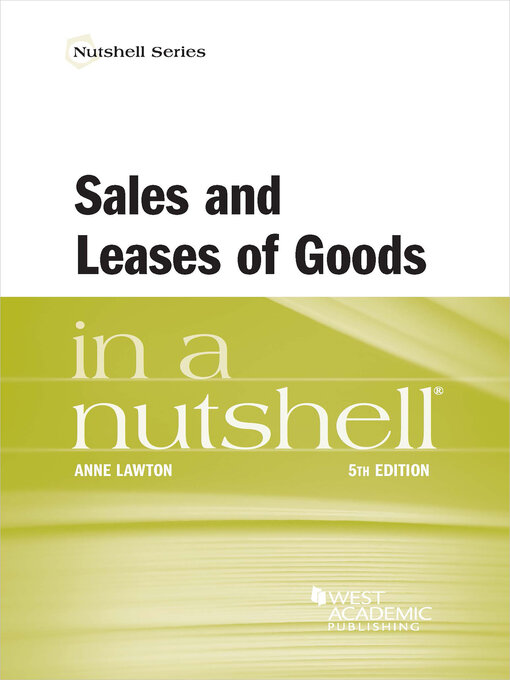The fifth edition of Sales and Leases of Goods in a Nutshell is an invaluable resource for those studying Articles 2 and 2A of the UCC. The Nutshell begins with a discussion of when Article 2 versus Article 2A applies to a transaction; the relationship among Articles 2, 2A, and 9; and the predominant purpose test. Early chapters cover contract formation; the Statute of Frauds and the parol evidence rule; assignment and delegation; warranties, including a short discussion of Magnuson-Moss; unconscionability; and good faith purchasers, subsequent lessees, and sublessees. The last half of the Nutshell begins with performance issues, such as the perfect tender rule; acceptance, rejection, and revocation of acceptance; cure; risk of loss; and excuse. Anticipatory repudiation and the adequate assurance doctrine are covered. The Nutshell closes with an extensive examination of the remedy provisions of Article 2 and 2A, as well as the UCC's rules on the liquidation and limitation of remedies.More than 150 examples in the text – drawn from the case law, the commentaries for the UCC and the Restatement, and the author's teaching hypotheticals – demonstrate how the UCC's language operates in practice. In addition, several diagrams and flowcharts provide the reader with a user-friendly illustration of difficult concepts, such as the Battle of the Forms.
The fifth edition of Sales and Leases of Goods in a Nutshell is an invaluable resource for those studying Articles 2 and 2A of the UCC. The Nutshell begins with a discussion of when Article 2 versus Article 2A applies to a transaction; the relationship among Articles 2, 2A, and 9; and the predominant purpose test. Early chapters cover contract formation; the Statute of Frauds and the parol evidence rule; assignment and delegation; warranties, including a short discussion of Magnuson-Moss; unconscionability; and good faith purchasers, subsequent lessees, and sublessees. The last half of the Nutshell begins with performance issues, such as the perfect tender rule; acceptance, rejection, and revocation of acceptance; cure; risk of loss; and excuse. Anticipatory repudiation and the adequate assurance doctrine are covered. The Nutshell closes with an extensive examination of the remedy provisions of Article 2 and 2A, as well as the UCC's rules on the liquidation and limitation of remedies.More than 150 examples in the text – drawn from the case law, the commentaries for the UCC and the Restatement, and the author's teaching hypotheticals – demonstrate how the UCC's language operates in practice. In addition, several diagrams and flowcharts provide the reader with a user-friendly illustration of difficult concepts, such as the Battle of the Forms.

